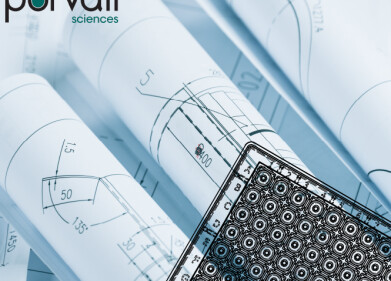Laboratory Products
Can AI Design Drugs?
Aug 25 2018
In an announcement that has the pharmaceuticals sphere buzzing, a team of scientists from the University of North Carolina have developed an artificial-intelligence model that can teach itself to design new drug molecules. Working from scratch, the AI system is powered by an algorithm and computer program made up of two neural networks. Called Reinforcement Learning for Structural Evolution and nicknamed ReLeaSE, the exciting new technology has the potential to drastically fast-track the design of new drug candidates.
A "teacher and student" team
The team liken the neural networks to a teacher and a student. The "teacher" is armed with an understanding of roughly 1.7 million biologically active molecules. The insight, which includes knowledge of the syntax and linguistic rules of each chemical structure, is then passed onto the "student" who over time becomes better at developing new molecules that could be used to create medicines.
A patent is already pending for the new technology, with the team hoping it will become a powerful successor to virtual screening, a computational method that's currently used by pharmaceutical companies to develop new drug candidates. The difference lies in ReLeASE's unique ability to proactively create and analyse new molecules, whereas virtual screening only assesses known chemicals.
"If we compare this process to learning a language, then after the student learns the molecular alphabet and the rules of the language, they can create new 'words,' or molecules," explains Alexander Tropsha, co-creator of ReLeaSE. "If the new molecule is realistic and has the desired effect, the teacher approves. If not, the teacher disapproves, forcing the student to avoid bad molecules and create good ones."
"A scientist using virtual screening is like a customer ordering in a restaurant. What can be ordered is usually limited by the menu," adds co-creator Olexandr Isayev. "We want to give scientists a grocery store and a personal chef who can create any dish they want."
Creating custom medicines
The technology is so sophisticated it can be directed to generate molecules with pre-specified properties, including safety profiles and bioactivity levels. Physical properties, including melting point and water solubility, can also be customised.
"The ability of the algorithm to design new, and therefore immediately patentable, chemical entities with specific biological activities and optimal safety profiles should be highly attractive to an industry that is constantly searching for new approaches to shorten the time it takes to bring a new drug candidate to clinical trials," says Tropsha.
Next generation technology plays a key role in advancing medical developments. For a closer look at the latest industry news don't miss 'New Confidence in Fluorescence - Developments in Instrument Qualification'
Digital Edition
ILM 49.5 July
July 2024
Chromatography Articles - Understanding PFAS: Analysis and Implications Mass Spectrometry & Spectroscopy Articles - MS detection of Alzheimer’s blood-based biomarkers LIMS - Essent...
View all digital editions
Events
ACS National Meeting - Fall 2024
Aug 18 2024 Denver, CO, USA
Aug 25 2024 Copenhagen, Denmark
Aug 28 2024 Phnom Penh, Cambodia
Sep 04 2024 Chiba, Tokyo, Japan
Sep 04 2024 University of Warwick, Coventry, UK


















